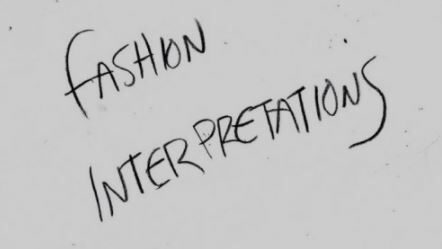This symposium took place online across five nights, showcasing the work of participants in The Courtauld/London College of Fashion AHRC-funded Fashion Interpretations: Dress, Medium & Meaning networking project led by Rebecca Arnold and Judith Clark.
Presentations highighted aspects of individual and joint research into fashion and medium, exploring specific case studies from our perspectives as dress and film historians, artists, writers and illustrators, stylists and journalists.
Fashion Interpretations was an international, interdisciplinary network focused on the ways modern and contemporary fashion is continually reinterpreted through varied mediums. It sought to gain insight into the ways representational modes translate and reconfigure the meaning of fashion itself.
The symposium was the culmination of a year-long research initiative and also marked the launch of Archivist Addendum – a publishing project exploring the nascent space between standardised fashion editorial and academic research.









